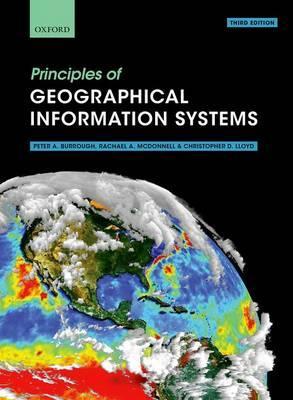Principles of Geographical Information Systems

Principles of Geographical Information Systems
Principles of Geographical Information Systems presents a thorough overview of the subject, exploring both the theoretical basis of GIS, and their use in practice. It explains how data on the world are converted into digital form and the analytical capabilities used to bring understanding to a range of areas of interest and issues.
Spatial data are usually based on two, dichotomous paradigms: exactly defined entities in space, such as land parcels and urban structures, or the continuous variation of single attributes, such as temperature or rainfall. The adoption of one or the other influences how the geographical data are structured in the GIS and the types of analysis possible. A further area of focus in the book concerns the problems of data quality and how statistical errors in spatial data can affect the results of
spatial modelling based on the two paradigms of space. Fuzzy logic and continuous classification methods are presented as methods for linking the two spatial paradigms. The book concludes with an overview of current developments and trends in providing spatial data to an ever-expanding global
community of users.
Online Resource Centre
The Online Resource Centre to accompany Principles of Geographical Information Systems features:
For students:
* Datasets with instructions of how to repeat analyses presented in the book using widely-used software
For registered adopters of the book:
* Figures from the book, available for download
PRP: 547.10 Lei
Acesta este Prețul Recomandat de Producător. Prețul de vânzare al produsului este afișat mai jos.
492.39Lei
492.39Lei
547.10 LeiLivrare in 2-4 saptamani
Descrierea produsului
Principles of Geographical Information Systems presents a thorough overview of the subject, exploring both the theoretical basis of GIS, and their use in practice. It explains how data on the world are converted into digital form and the analytical capabilities used to bring understanding to a range of areas of interest and issues.
Spatial data are usually based on two, dichotomous paradigms: exactly defined entities in space, such as land parcels and urban structures, or the continuous variation of single attributes, such as temperature or rainfall. The adoption of one or the other influences how the geographical data are structured in the GIS and the types of analysis possible. A further area of focus in the book concerns the problems of data quality and how statistical errors in spatial data can affect the results of
spatial modelling based on the two paradigms of space. Fuzzy logic and continuous classification methods are presented as methods for linking the two spatial paradigms. The book concludes with an overview of current developments and trends in providing spatial data to an ever-expanding global
community of users.
Online Resource Centre
The Online Resource Centre to accompany Principles of Geographical Information Systems features:
For students:
* Datasets with instructions of how to repeat analyses presented in the book using widely-used software
For registered adopters of the book:
* Figures from the book, available for download
Detaliile produsului









